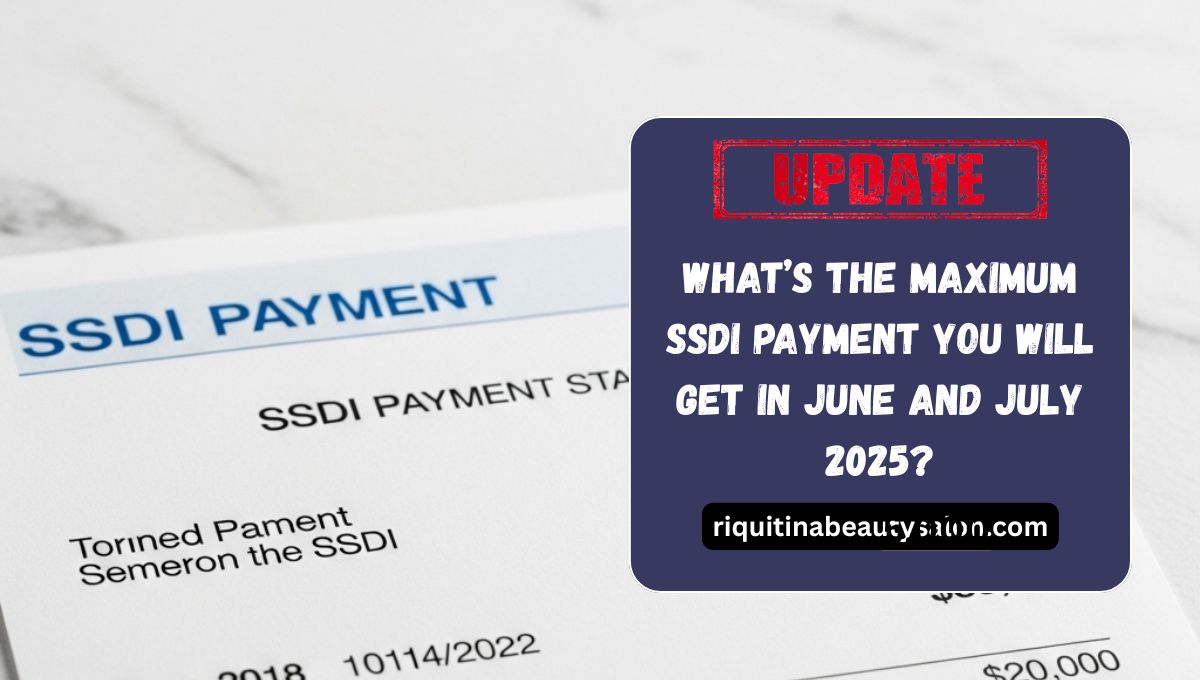As summer begins, Social Security Disability Insurance (SSDI) recipients are preparing to receive their benefits for June and July 2025, adjusted for the cost of living. With inflation continuing to influence the economy, beneficiaries are hopeful that their SSDI payments will help ease financial burdens during these warmer months.
Who Qualifies for SSDI?
SSDI is a federally administered benefit for individuals who are unable to work due to a significant, long-term medical condition. To qualify, you must:
- Have a medically determinable disability that prevents substantial work
- Expect the condition to last at least 12 months or result in death
- Accumulate sufficient work credits by paying into Social Security through payroll taxes
SSDI is not a short-term or partial disability benefit. Full compliance with eligibility criteria is necessary.
How Are Payments Scheduled?
The Social Security Administration (SSA) follows a staggered payment schedule based on birth dates:
- June 11 & July 9: If your birthday falls between the 1st and 10th
- June 18 & July 16: If your birthday falls between the 11th and 20th
- June 25 & July 23: If your birthday is between the 21st and 31st
Those who began receiving benefits before May 1997 are typically paid on the 3rd of each month—so their checks for June came on June 3, and July’s payment will be made on July 3.
What If You Also Receive SSI?
If you’re receiving Supplemental Security Income (SSI) along with SSDI, your June payment was likely sent on May 30, since June 1 was a Sunday. The July SSI check will be sent on July 1, 2025.
What Is the Maximum SSDI Payment in 2025?
In 2025, the maximum SSDI benefit a person can receive is $4,018 per month. This figure applies to high-income earners who paid into the system for decades and delayed retirement or disability claims strategically.
Most SSDI recipients, however, do not receive this maximum. The average SSDI payment as of May 2025 is around $1,580, a modest increase from the 2024 average of $1,540. Your specific benefit amount depends on:
- Your work history
- Lifetime earnings
- The bend point formula used by SSA
Bonus Benefit: Medicare Access
After 24 months of continuous SSDI payments, you are eligible for Medicare, providing vital access to health care services. This includes coverage for:
- Hospital stays (Part A)
- Outpatient care and doctor visits (Part B)
- Optional prescription drug coverage (Part D)
Final Thoughts
The SSDI system provides crucial financial and medical support for millions of Americans facing long-term disability. Whether you’re receiving the maximum benefit of $4,018 or the average $1,580, knowing your eligibility and payment schedule ensures that you’re prepared.
Make sure your My Social Security account is updated to track exact payment dates and estimated monthly benefits.
FAQ’s:
- What is the maximum SSDI payment for June and July 2025?
The maximum monthly SSDI payment is $4,018 for high-earning beneficiaries. - When will I get my June 2025 SSDI check?
Your payment date depends on your birth date—either June 11, 18, or 25. - When is the July 2025 SSDI payment scheduled?
Payments will go out on July 9, 16, or 23, based on your birth date. - Who gets SSDI payments on the 3rd of the month?
Those who began receiving benefits before May 1997 are paid on the 3rd of each month. - When will I get my SSI if I also receive SSDI?
June SSI was paid early on May 30, and July SSI will be paid on July 1, 2025.
